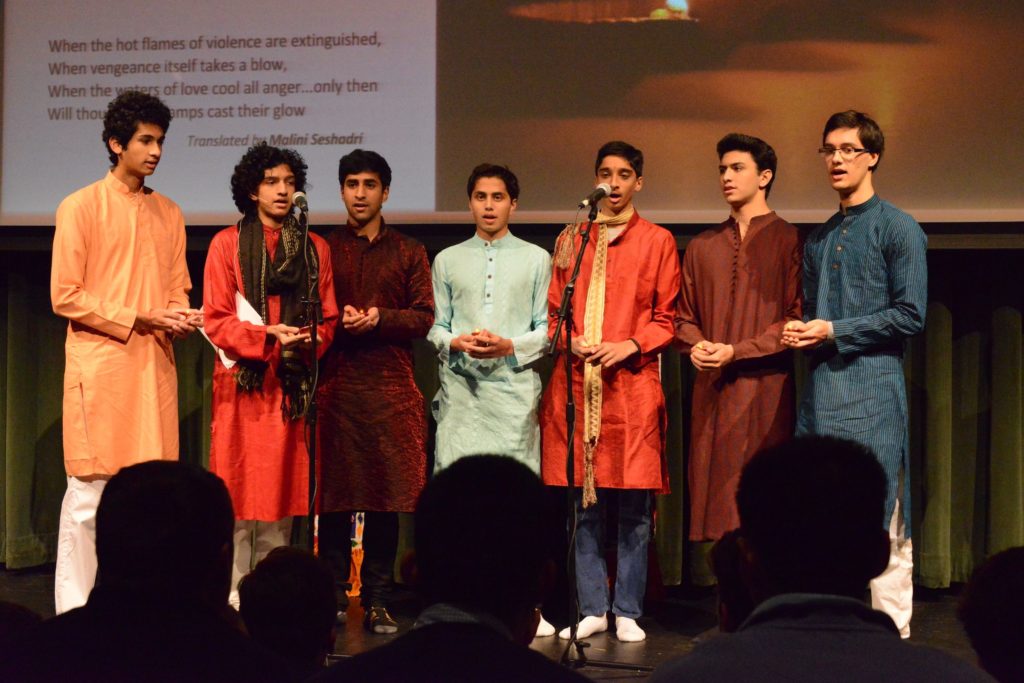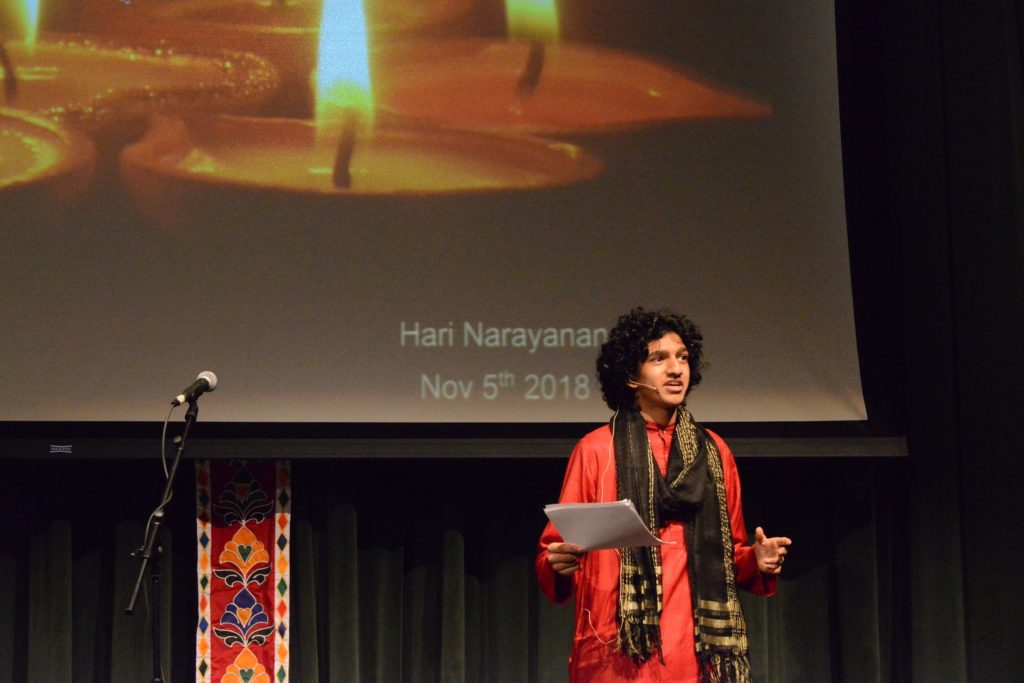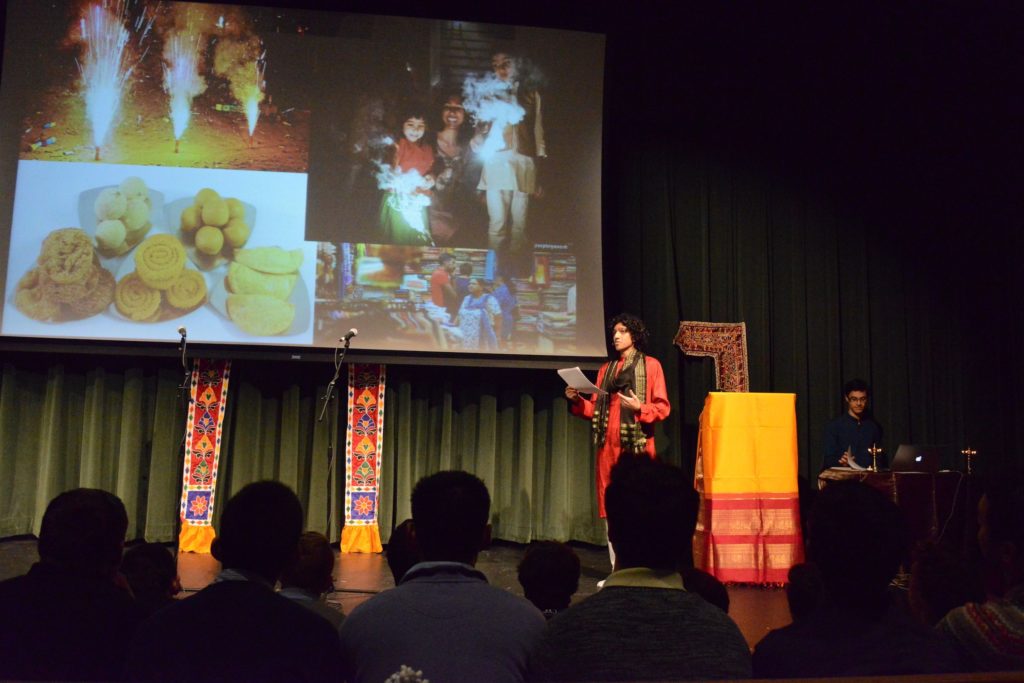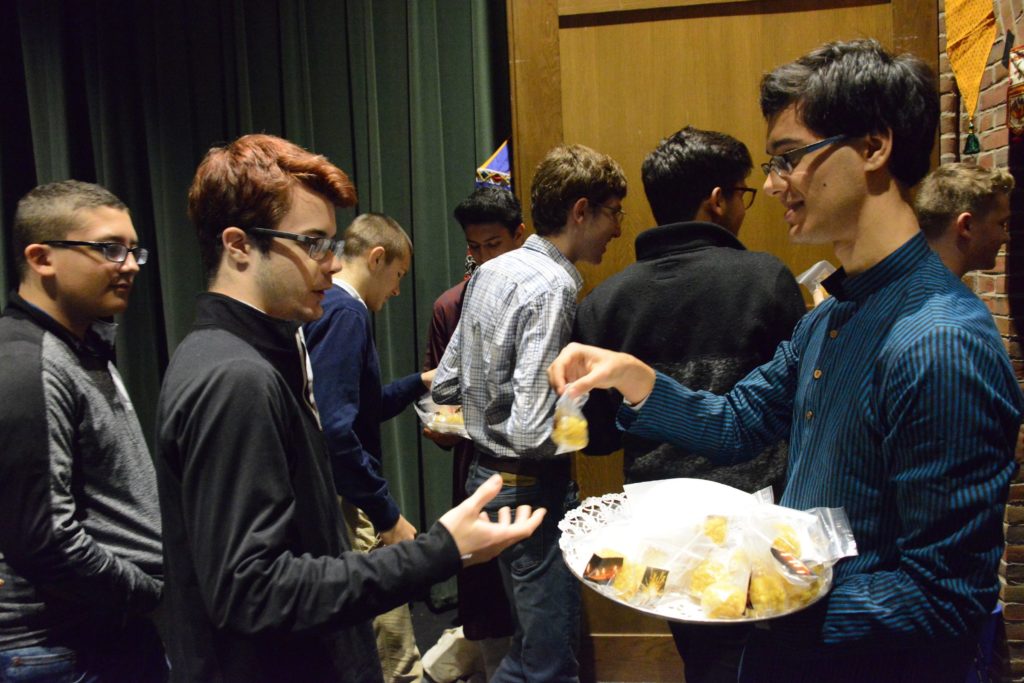Hari Narayanan (II) on the History and Traditions of Diwali
Did you know that Deepavali (also known as Diwali, the Indian festival this year celebrated on November 7) can be translated from Sanskrit to mean “rows of light”? Or that Mahalakshmi, the Goddess of wealth, prosperity, and happiness, is welcomed into homes all over the world during the days leading up to the festival? Or that in the Hindu religion, the wick of a candle symbolizes one’s ego, and during Diwali celebrants burn up the wick with a flame that represents knowledge?
A long-standing practice at Roxbury Latin is the exploration of different faith traditions, particularly in Halls delivered by faithful members of the RL community. On November 5, Hari Narayanan of Class II gave an informative and jubilant presentation, during which students, faculty and staff learned about Diwali, the holiday celebrated by Hindus, Buddhists, Jains, and Sikhs all over the world. The fifth largest festival in the world, Diwali is the festival of light. It is celebrated with oil lamps, firecrackers, fairs (called Melas), charitable donations of food, and sweets for children. (Care of Hari, all students and faculty were treated to Laddus—essentially fried balls of sugar—on the way out of Hall.)
The Smith Theatre was beautifully decorated for the occasion, and Hari—along with six other RL boys—demonstrated the ancient Sanskrit mantra Asatoma Satgamaya. Hari’s presentation included ancient myths of evil demons and Mother Goddesses, musical Sanskrit prayers, and the reflections of Mahatma Gandhi. It was a morning of beautiful colors, song, sweets, and of course, light.




